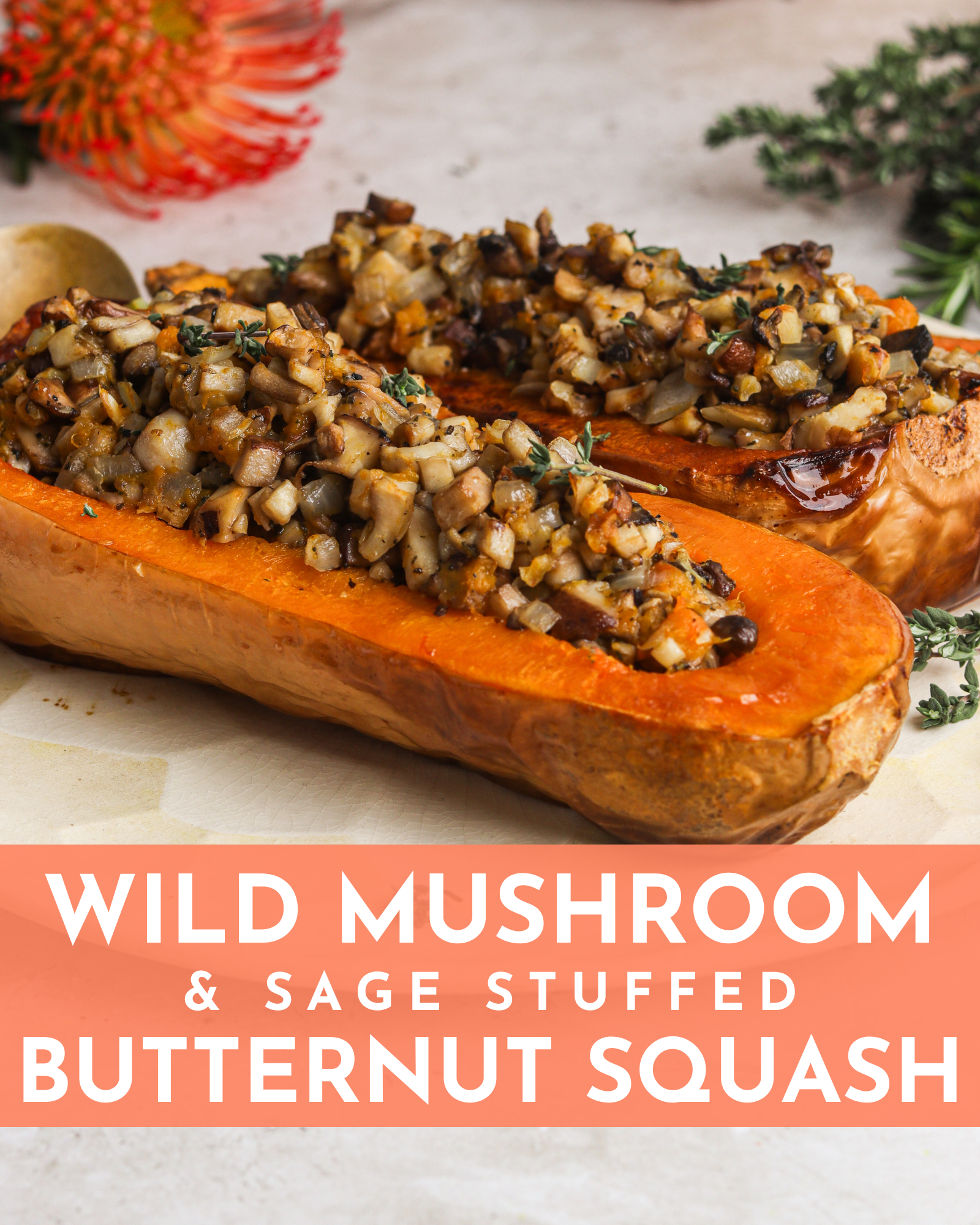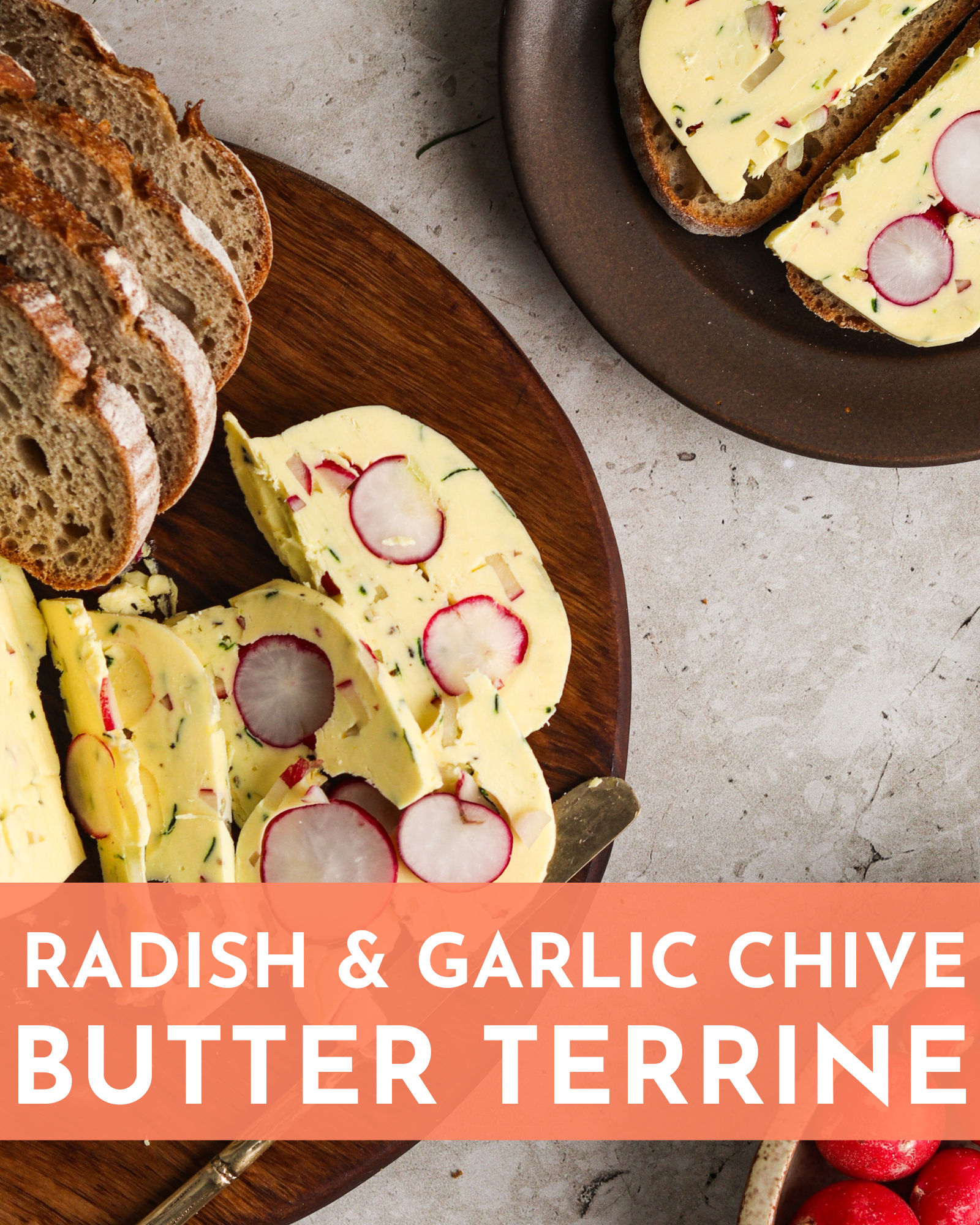Thanksgiving is stock season! Got some leftover vegetables from all those holiday meals? Why not make a stock? Vegetable stock is great for maximizing flavor and minimizing waste. If you’ve ever made a batch of homemade vegetable broth with onion skins, carrot tops, and other kitchen scraps, you know just how good it can be. If you haven’t, and you find yourself staring at a pile of scraps and wondering, “What now?” you’ve come to the right place. We’re gonna show you how to get the most out of every simmered spoonful AND prevent food waste this holiday season.
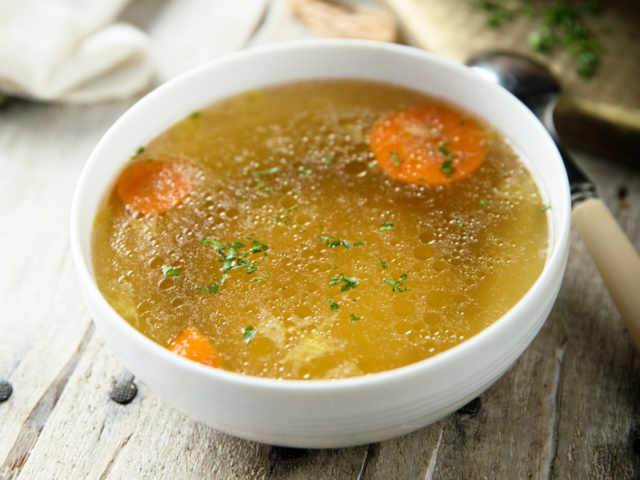
Where Did Making Stock Originate?
Making stock dates back to early human history. It was a practical way to extract as many nutrients as possible from food at a time when wasting ingredients simply wasn’t an option. Early versions of stock date back thousands of years, long before modern kitchens, as a means to both preserve resources and stretch the flavor potential of every ingredient.
In ancient China, for example, bone broths were popularly consumed for their health benefits and were made by simmering bones with water and aromatics for hours. This created a flavorful base for all sorts of other dishes, including soups and stews. Medieval European kitchens also leaned heavily on stocks and broths, cooking up what was known as “pottage”, a thick, stewed mixture that would simmer all day with whatever ingredients were on hand. Wealthier households would toss in meats and exotic spices, while peasant households focused on vegetable scraps and any leftover bones.
In the 17th century, the French further refined stock-making by developing recipes for four foundational stocks or “fonds” as a base for classic sauces. While stocks were originally meat-based, vegetable stock was popular in regions where vegetables were more abundant than meat. Root vegetables, onion peels, herb stems, and other scraps were simmered to create rich flavors without meat.
Historically, stocks weren’t made with veggies like bell peppers, green beans, or other strong flavors as they could overpower the stock. Folks would usually stick with four main ingredients to create a balanced base: carrots, onions, celery, and bay leaf. These ingredients are still found in most stock recipes today, even in vegetarian and vegan kitchens, where stocks are designed to maximize flavor while keeping things plant-based.
Making stock from kitchen scraps, rather than discarding them, is a practice that has lasted throughout the ages. While it started as a way to be frugal and resourceful, now it’s become a regular cooking hack to throw in veggie scraps like garlic skins, carrot tops, and mushroom stems to make delicious, nutritional stocks.

How to Make Vegetable Stock
Making veggie stock is incredibly easy, and the best part is that you can use whatever veggie scraps you have on hand. Start by collecting your kitchen scraps in a freezer bag — think onion skins, carrot tops, broccoli stems, herb stems, and even garlic skins. Once you’ve got enough scraps, toss them in a stock pot with enough water to cover everything by about an inch.
Add a few aromatics like bay leaves, a pinch of salt, and maybe some black pepper or fresh herbs if you have them. Bring it all to a boil, then reduce to a gentle simmer for about 45 minutes to an hour. Once it’s done, strain through a fine mesh strainer, pressing the solids to get every last drop of that flavorful stock. Now you have a delicious homemade veggie stock ready for soups, stews, or even just cooking rice with a little extra flavor!

Here’s Just Some of What You Can Do With Veggie Stock
Freeze It For Future Flavor
Got more stock than you can handle? Freeze it! Pour homemade vegetable stock into ice cube trays, freeze, then pop those cubes into a freezer bag for later use. These handy little cubes of are perfect for adding a flavor to grain bowls, soups, and sauces. Whenever you’re craving a little extra flavor, just toss in a few veggie stock cubes, and your dish will be instantly elevated. Freezing stock is a also great way to preserve the nutritional value of veggies and reduce food waste from leftover vegetable scraps.
Use It As Cooking Liquid
If you’ve got green beans, sweet potatoes, or garbanzo beans on your Thanksgiving menu, consider cooking them in veggie broth rather than plain water. This trick works wonders for grain bowls too; instead of water, use your own vegetable broth to cook rice, quinoa, or farro. Not only does this add depth to the dish, but it also makes use of your stock while it’s fresh. Trust me, you’ll never go back to plain water again.
Homemade Soups and Stews
Homemade stock makes a killer base for soups and stews. Whether you’re making a chunky vegetable soup or a smooth pureed bisque, a homemade vegetable stock is a perfect way to add hearty, savory flavors without reaching for store-bought broths. For even added flavor, throw in some herb stems, a few garlic skins, and maybe even the root end of an onion for that extra kick.
Vegetarian and Vegan Dishes
If you’re serving plant-based eaters, try adding it to vegetarian recipes like lentil stew, mushroom risotto, or even a classic stuffing. Adding homemade broth brings a depth of flavor that’s hard to achieve with plain water. Plus, it’s a good use of those veggie scraps you’ve saved from all your Thanksgiving prep.
Add It to Sautéed Veggies
When you’re sautéing brussels sprouts, bell peppers, or broccoli stems, add a splash of veggie stock to deglaze the pan. It adds a ton of flavor and keeps things from sticking without needing too much olive oil. Just a splash will will add a nice umami punch and it’s also a good way to keep things moist and flavorful.
Make a Risotto or Grain Bowl
Got some leftover rice, barley, or quinoa in the fridge? Heat it up in a bit of veggie stock to add life and flavor. Stir in some onion peels or green onion for an extra flavor boost. The stock pot doesn’t have to be just for soup. Risottos and grain bowls love the flavor too. Try adding a little parmesan cheese at the end for an extra savory note.
Compost Any Remaining Scraps
If you’ve wrung every bit of flavor from your scraps, toss them in your compost pile or compost bin. Not only are you using your leftover vegetable scraps to make flavorful vegetable stock, but you’re also feeding your garden down the line. After Thanksgiving, there’s no better time to rethink food waste and give your garden a boost.
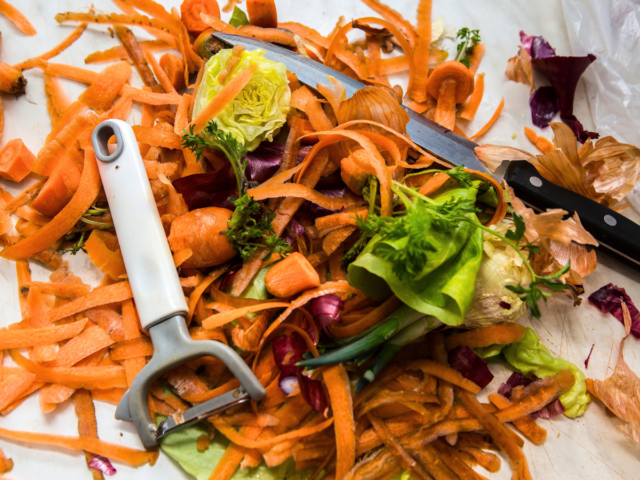
Pro Tips For Better Vegetable Stock
- Use a fine mesh strainer to remove all the bits for a smooth broth.
- Avoid cruciferous vegetables like cabbage and cauliflower; they can add a bitter taste.
- Bay leaves and a pinch of salt can make all the difference—don’t forget them!
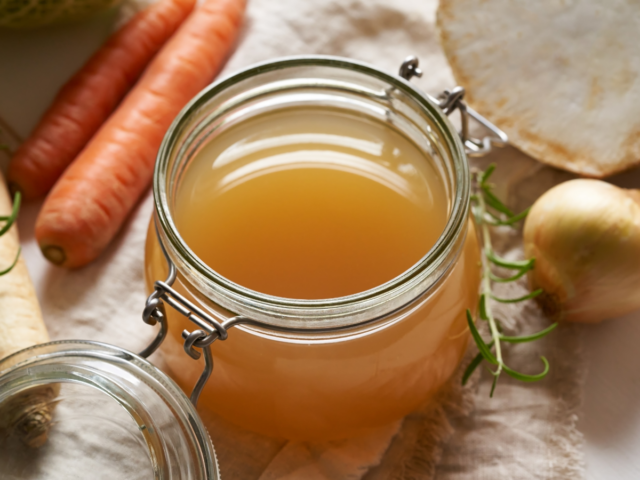
Let’s Get to Stockin’!
This Thanksgiving, use broth as your secret weapon of flavor. Maybe it’ll even inspire you to see what you can whip up from it! Soups. Risottos. Sauces. The world is your oyster! There’s truly no end to the possibilities for your leftover vegetable stock. Plus, using up all those veggie scraps from Thanksgiving prep is just plain satisfying.
How will you use your veggie stock? We want to know! Leave us a comment below.
Want More Ways to Love Your Leftovers?
- No Waste November: A 7-Day Meal Plan for Thanksgiving Leftovers
- Meal Ideas For Turkey Day Leftovers
- What To Do With Thanksgiving Leftovers: Turn THIS into THAT
- Leftover Turkey: “The Bobbie” Thanksgiving Sandwich


